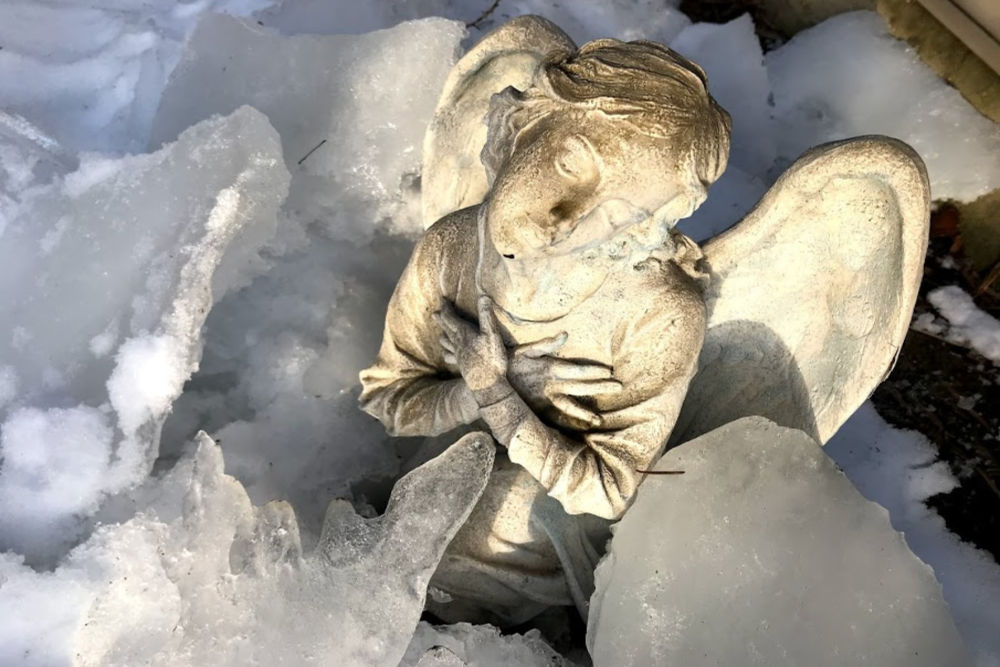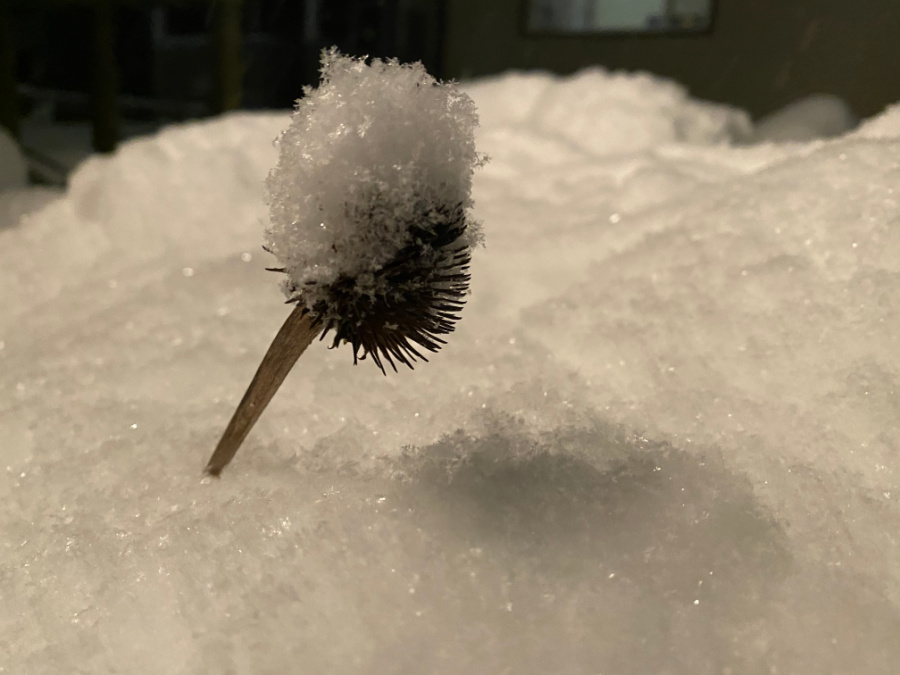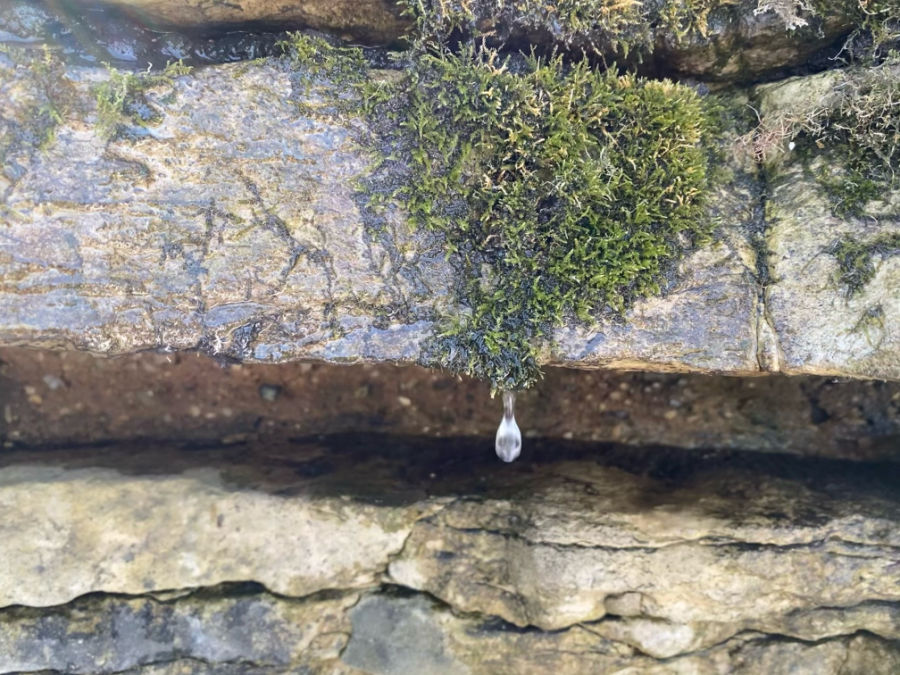This angel came with our house in the Chicago suburbs. When we moved in, she was planted with the hostas between the utility meters and the neighbors’ chain link fence. Just after Ash Wednesday, I found her surrounded by ice.
At first, it looked as though she was rising up through the thick layer of snow and ice that covered the ground. In fact, she had survived the ice that had come crashing down from the roof above her. The scene captured the beautiful, terrible season of Lent. Like the angel, during Lent, Christians face down the fact of a world that continues to crash down around us. We are sheltering in place with a world so far from the one God longs for us. And, yet, with the Easter story come visions of another world in which we, like the angel, are rising up through everything that threatens to bury us.
Lent is a time in the church year where Christians explicitly practice seeing both the terrible facts of the world as it is alongside its pockets of beauty and possibility. Lent is a permission slip to practice the art of seeing both the earthly and the ethereal together in the same field of vision. Kate Bowler, bestselling author of Everything Has a Reason and Other Lies I’ve Loved, closed her Lenten devotionals with the benediction, “Have a beautiful, terrible day.” She acknowledged that our days are rarely just fine. They are beautiful, terrible days – and not just during Lent.
The capacity to hold together the vision of our lives as both beautiful and terrible is a spiritual discipline, and every Lent is a refresher course for Christians to practice the art of seeing both the beauty and terror, the angel in the ice rising up and hunkered down.
Humans with stereoscopic vision look out at the same scene, but each eye takes in an image with slight differences. From the differences, the scene gains the perception of depth. Humans with stereophonic hearing can register width and directionality from the differences between the sounds coming into each ear. Lent is a season to practice holding the multiple stories of our beautiful, terrible lives so that faith can be lived in stereo.
Chimamanda Ngozi Adichie names the violence of cutting off or reducing down our stories about a person or a place to a single thing: “The single story creates stereotypes, and the problem with stereotypes is not that they are untrue, but that they are incomplete. They make one story become the only story… When we reject the single story, when we realize that there is never a single story about any place, we regain a kind of paradise.” Adichie explains why the practice of telling our stories in stereo is life-giving practice.
As a lifelong Midwestern Lutheran, winter has always seemed like the right season for Lent because there are so many opportunities to practice the art of seeing both the beauty and the terror. When raindrops freeze on beach grasses, I try to see solidity in the frozen fluidity and stability in the flow.
I practice trusting that even in stillness there is motion. Like ice on the lakeshore, frozen yet growing, layer-by-layer, wave-after-wave. Still, but in motion. Still-in-motion.
I practice with my children, too. When I showed my seven-year-old son this photo of a purple coneflower with a puff of snow, he said, “Mama, that flower looks sad. The snow looks too heavy.”
I answered, “It does! I see that too. But… what if it’s also a picture of a flower playing. Maybe she’s about to throw a big snowball at her frozen flower friend.” And, just for a moment, he saw the possibility of another story, and a kind of paradise was regained.
Usually, our family talks about the full range of our feelings with mashup emotions like happysad (which shows up, for example, in the curious mix of bittersweet memories of pre-pandemic sleepovers) or hangry (which is the amplified anger that comes when you’re also hungry). The coneflower snowball gave us a chance to practice seeing both emotions not just in our interior landscape but as a way to interpret the world outside. These are small ways to build the foundation for our faith that fully holds together the multiple stories of our beautiful, terrible lives.
The multiple stories that allow faith to be practiced in stereo are like a sunset in an overcast sky. Accepting the spectrum of experience allows us to see and experience the pinks and oranges and purples.
Neither Lent nor Midwestern winters are flyover seasons. They are opportunities to see faith in three-dimensional space. After the thaw, when the spring has come and the Easter season has arrived, we don’t live in a world that only calls forth “Alleluia.” The Lenten practice of looking with complexity continues to sustain our beautiful, terrible lives, to ground our hope in the pockets of possibilities for the world as it could be, and to make possible the art of living faith in stereo.
Like this post? Subscribe to have new posts sent to you by email the same day they are posted.










Thank you! This says much about the divisions among us and how it is right that we hold within us what seems to opposite.
Thank you Lea for this fine essay that speaks to tne necessary work of the union of opposites. Reminds me of a line from Wendell Berry, “Be joyful though you have considered all the facts.” Long live beautiful terrible days.